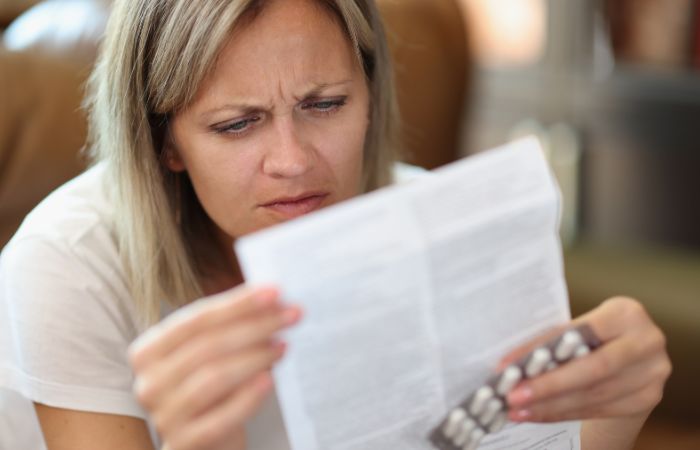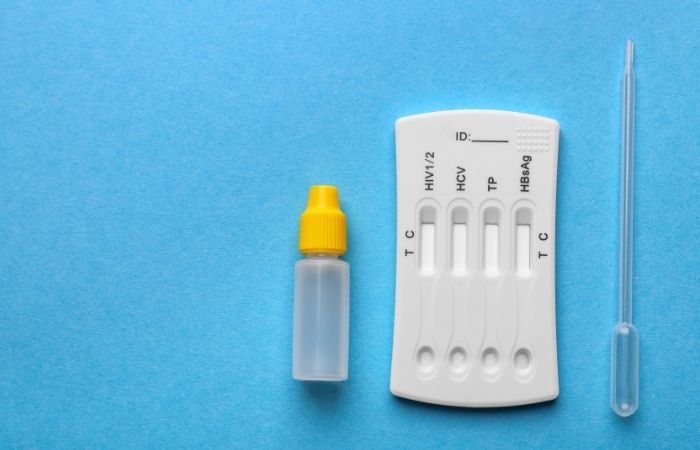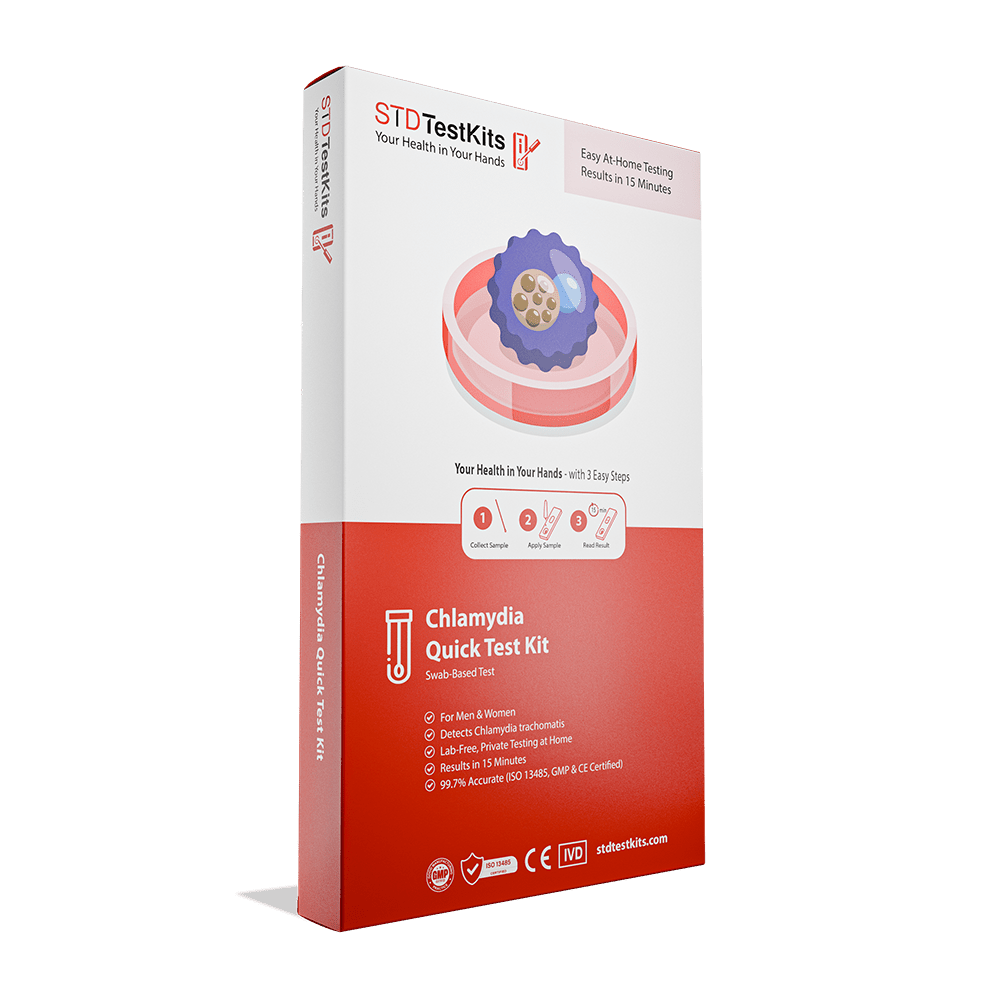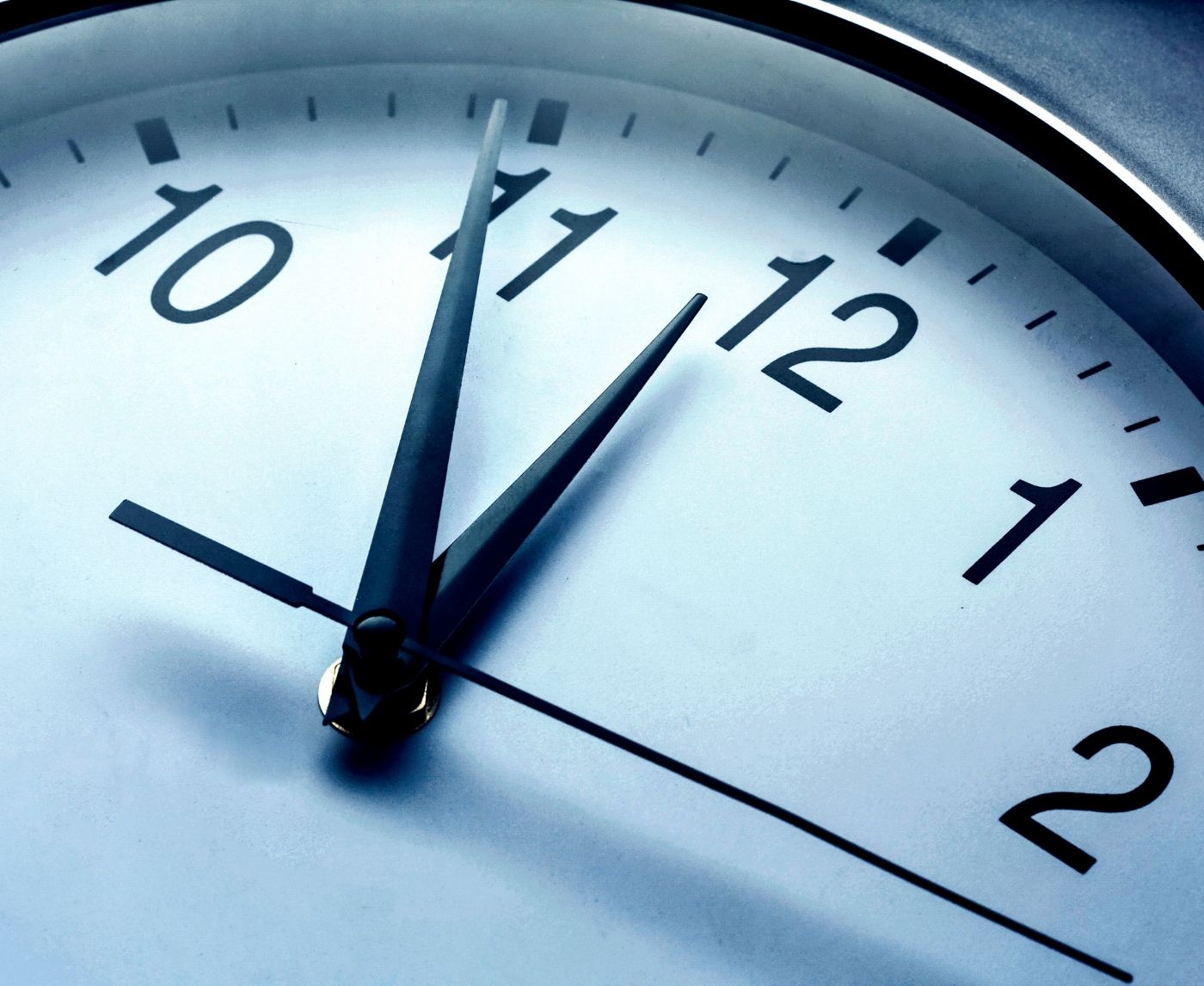When to Test for Syphilis After Exposure (And When Not To)
Quick Answer: Most at-home chlamydia tests are 85–99% accurate when used correctly and during the right window period. But timing, technique, and test type all affect the result. False negatives can and do happen, especially if you test too soon or misread the cassette.
Why Accuracy Isn’t a Straight Number
Let’s get one thing straight: test accuracy isn’t just a single score printed on the box. There’s sensitivity, which measures how good the test is at catching true positives. And there’s specificity, how well it avoids false alarms. Most rapid tests for chlamydia use lateral flow technology, similar to a COVID test or pregnancy test. They’re fast and private, but not perfect.
In clinic settings, lab-based NAAT tests (nucleic acid amplification tests) are the gold standard. These tests have sensitivity and specificity rates above 95–99%. At-home tests are improving, but there’s a range. Some are lab-backed mail-in kits (high accuracy), while others are rapid lateral flow tests you read yourself (moderate to high accuracy depending on use).
Figure 1. Chlamydia test accuracy varies by method. Rapid tests may miss early or low-level infections.
“My Test Was Negative. But I Still Had It.”
Jon, 28, thought he was in the clear.
“I had a one-night stand on a trip and tested with a home kit five days later, negative. No symptoms. I felt relieved. But two weeks after that, I got a weird discharge and tested again at a clinic. Boom, positive.”
This story isn’t rare. In fact, it’s textbook. Testing too early is one of the biggest reasons at-home kits miss chlamydia. The bacteria may be present but undetectable if it hasn’t multiplied enough. Think of it like catching smoke before there’s a flame. The test needs something to detect. If it’s not there yet, or your sample didn’t collect it, you’ll get a false negative.
Jon’s not alone. We hear from people weekly who tested “just to be sure” but didn’t know the window period, or assumed no symptoms meant no risk. Later, when symptoms finally showed up (or a partner got diagnosed), they realized their first test gave them false peace.
This isn’t to say rapid tests are bad. It’s to say: timing, collection, and interpretation matter a lot more than most people are told.
When Accuracy Drops: 5 Mistakes That Wreck Results
Ever use a test that says “invalid”? Or stare at a line so faint you’re not sure it’s even there? Yeah, those moments aren’t just frustrating, they’re common. At-home chlamydia tests are powerful tools, but they're also fragile. Here’s what knocks their accuracy down in the real world:
- Testing Too Early: Most chlamydia tests don’t pick up infection reliably until 7–14 days after exposure. Testing on day 2 or 3? You’re probably wasting the strip.
- Poor Sample Collection: Rushed swabs, not going deep enough, or using the wrong area (vaginal instead of rectal, for example) can mean there’s no bacteria for the test to find.
- Not Following Timing Precisely: Wait too long to read the result? It might show a ghost line that means nothing. Read it too early? It might still be processing.
- Misreading the Cassette: Faint lines confuse people. Many assume faint = negative. But in most lateral flow tests, any line in the test area, even light, should be read as positive.
- Using Expired or Mishandled Kits: Heat, humidity, or expired chemicals can skew results. Always check packaging and storage instructions before use.
It’s not that people are careless, it’s that no one teaches them how these tests actually work. That’s on us to fix.

People are also reading: Why Probiotics Won’t Protect You From Chlamydia
What That Faint Line Actually Means
If you’ve ever squinted at a chlamydia rapid test cassette under bathroom light, wondering, “Is that... a line?”, you’re not alone. This is one of the most common moments of panic we hear about, and one of the most misunderstood.
Unlike a pregnancy test, where line strength can vary based on hormone levels, a chlamydia rapid test generally treats any line in the test area as a positive result. Yes, even a faint one. Even one you can barely see. If there’s color where there should be none, assume it means something.
Case in point: Aimee, 22, used a rapid test three days after a hookup.
“I saw a whisper of a line but assumed it was invalid because it wasn’t dark like the control line. So I moved on. Weeks later, I got tested again, positive. My doctor told me that faint line probably meant I was already infected.”
Rapid tests use immunoassays, which detect the presence of chlamydia antigens (proteins). If your body has just a small amount, the line will be faint, but it still means the test reacted. The test isn’t judging how sick you are, only whether it detects the target.
Positive, Negative, Invalid: How to Interpret At-Home Results
Reading a rapid test isn’t always straightforward. Between the speed of development and the emotional weight of the result, it’s easy to misinterpret what’s in front of you. Here’s a breakdown of what common results actually mean in plain terms:
Figure 2. At-home chlamydia test results and how to read them correctly.
Why Timing Matters More Than Test Brand
It’s tempting to blame the brand when a test gives you an unexpected result. But the truth? Even the best chlamydia test in the world can fail if the sample is collected too early. That’s not a flaw, it’s biology.
Chlamydia has a window period, the time between exposure and when the infection becomes detectable. Most people won’t test positive until at least day 7 post-exposure, with peak detectability around days 10–14. If you test before that, you’re asking a question your body can’t answer yet.
Marco, 34, tested on day 3 and again on day 12.
“First test: negative. Second test: positive. Same brand, same kit. Timing made all the difference.”
This is why healthcare providers often recommend a two-step strategy: one test around 7–10 days as a baseline, and a second test 14+ days after exposure if the first was negative but you’re still worried, or symptoms appear.
Can I Trust Just One Test?
Short answer? Not always. Especially not if you’re testing early, had multiple partners, or didn’t swab the right area. Trust isn’t about whether the test is good, it’s about whether the conditions were right for that test to succeed.
Lab-based NAAT tests (available via mail-in kits or clinics) are more sensitive and can pick up smaller amounts of bacteria earlier. If your at-home rapid test is positive, a lab test can confirm the result. If your test is negative but your gut says something’s off, retesting or switching to a lab option is smart, not obsessive.
Testing isn’t a one-and-done. It’s a snapshot. And sometimes, you need more than one picture to see the full story.
Want a more reliable read? Order a combo STD test kit here, it’s discreet, doctor-trusted, and comes with clear instructions to avoid common errors.
Do Antibiotics Affect Your Test Results?
Short answer? Yes. Antibiotics can absolutely mess with a chlamydia test result, especially if you take them before testing. Here’s why.
Rapid tests work by detecting chlamydia antigens. If you’ve started antibiotics, even just a single dose, those antigens may already be breaking down. That can cause a false negative, especially with self-read lateral flow kits that aren’t as sensitive as lab-based NAATs.
Karla, 26, learned the hard way.
“My partner tested positive, so I started doxycycline the same day. Then I took a test three days into treatment just to be sure, and it said negative. But the clinic later confirmed I did have it. I just tested after the meds kicked in.”
If you’ve already started treatment, don’t rely on the result of a rapid test. Either test first, or wait until after treatment and then retest (usually 3–4 weeks later) to confirm the infection has cleared.
What If You Have Symptoms but the Test Says Negative?
This is where things get dicey. If your body’s waving red flags, burning, discharge, pain during sex, but your rapid test says you’re negative, you’ve got two options: ignore the signs, or dig deeper.
We’re here for the second option.
Sam, 31, came to us after three negative rapid tests in a row, despite classic chlamydia symptoms.
“The third one showed a faint line and I thought it was just a misprint. I went to the clinic, did a lab swab, and boom, positive. I felt like an idiot for waiting so long.”
You’re not an idiot. You’re navigating a confusing landscape with little guidance. Symptoms + negative rapid = time for a lab test or clinician consult. Don’t wait for a test to “catch up” if your body already knows.
When Should You Retest for Chlamydia?
If you’re using at-home rapid tests, the general rule is to wait 14 days after exposure for the most reliable results. But life isn’t always that clean-cut. Here’s a quick guide:
Figure 3. Common retesting timelines based on exposure, symptoms, and treatment.
The Emotional Fallout of a Test You Can’t Trust
You bought the test for peace of mind. But now you’ve got doubts, maybe symptoms, maybe a weird feeling in your gut, and the result just doesn’t sit right. Welcome to the worst part of the rapid testing experience: the part no one talks about.
This isn’t just about biology. It’s about anxiety. Trust. Control. You might wonder if you’re overthinking. Or if your partner’s being honest. Or if your body’s playing tricks on you.
Lena, 29, told us:
“I’ve taken three at-home tests. All negative. But I’m scared to sleep with my partner again until I test at a clinic. I’m tired of feeling like I’m gambling with my body.”
You’re not overreacting. You’re navigating an invisible illness in a world that doesn’t teach us how. Trusting your instincts, even when the test is negative, is smart. And no, it doesn’t mean you’re paranoid. It means you’re paying attention.
Privacy, Power, and At-Home Testing That Works for You
All that said: at-home chlamydia tests can be a game-changer, when used right. They’re fast. They’re private. You don’t need to explain your sex life to a stranger in a white coat. And for people in rural areas, closet relationships, or stigma-heavy communities, these tests are sometimes the only safe option.
But just like condoms or Plan B, they work best when you know their limits.

People are also reading: Chlamydia from Fingering, Toys, or Oral? It’s Possible.
FAQs
1. Can I really trust an at-home chlamydia test?
Mostly, yeah. If you use it right and wait long enough after a hookup, about two weeks, it's a solid tool. But if you swab too early, misread the result, or the kit’s been sitting in a hot drawer since last summer? That’s when trust breaks down. Think of it like a weather app: super helpful, but you still look out the window before leaving without a jacket.
2. How soon after sex can I take the test?
Technically, anytime. Realistically? Wait 7–14 days if you want answers that matter. Testing too early is like checking your credit score the day after you buy something, you won’t see the impact yet. Chlamydia takes a minute to show up on tests, especially the at-home kind.
3. My test showed a faint line. Am I positive or not?
If there’s even a whisper of a line in the test area, yes, count it. People second-guess faint results all the time, but rapid tests aren’t giving you “levels.” They’re saying: chlamydia detected, period. If it’s there, no matter how light, you’ve got your answer.
4. I started antibiotics. Can I still test?
You can, but it might not be accurate. Antibiotics start killing bacteria fast, so the test may not detect what’s left. If you're already on meds, wait a few weeks and then retest. And next time? Test *before* popping those pills if you want a clear read.
5. I feel totally fine, do I still need to test?
Honestly? Yes. Chlamydia loves to stay quiet. Most people never get symptoms, and that’s part of the problem. Not feeling anything doesn’t mean nothing’s happening. Testing isn’t just about treating something, it’s about not passing it to someone else without knowing.
6. My partner tested positive, but I didn’t. Am I good?
You might be. But you might’ve tested too soon. Or swabbed wrong. Or your test just missed it. If your partner’s positive, assume you were exposed. Either treat together or retest after 7–14 days. This isn’t the time to play STI roulette.
7. Can I reuse a test if I messed it up?
Nope. Once it’s been opened or used, it’s done. The chemicals are one-time use. If the control line doesn’t show up or you drop the cassette in the sink, toss it and start fresh with a new one. Bonus tip: always have a backup kit. Like condoms, it pays to keep spares.
8. Should I test again after treatment?
If your doctor says so, or if you’re just not sure it worked, yes. A follow-up test about a month after antibiotics can confirm everything’s clear. And if you’re dating or hooking up again, it’s smart to test regularly anyway. Clean bill of health > awkward surprises later.
9.Clinic vs at-home test, what’s better?
Clinic tests are more sensitive and don’t rely on you reading tiny lines through anxiety-glazed eyes. But at-home tests win for speed, privacy, and accessibility. Honestly? The best one is the one you’ll actually take. If you're unsure, do both. No shame in double-checking.
10. What if I tested negative but still can’t stop worrying?
First off, you're not crazy. That mental loop, "What if it missed something?", is more common than you think, especially after a risky hookup or a scare. The truth is, even when a test says negative, your body and your gut might still be processing what happened. If the worry's loud enough to keep you up at night, retest. Not because the test was definitely wrong, but because peace of mind matters too. You’re allowed to take care of yourself twice.
Trust the Test, But Trust Yourself More
At-home chlamydia tests are a major win for privacy, convenience, and autonomy. But no test, no matter how fancy the packaging, is smarter than your body. If you’ve had a risk, if your partner tested positive, or if your symptoms are screaming louder than your negative result, take the next step.
That might mean retesting. That might mean confirming at a clinic. That might mean sending a quiet message to someone you slept with.
Whatever it is, it starts with one clear truth: you’re allowed to take your health seriously, even if no one else ever showed you how.
Need a test that’s fast, discreet, and doesn’t require a doctor’s appointment? Order your chlamydia rapid test here, and take the guesswork out of your next step.
How We Sourced This Article: Around 15 peer-reviewed journals, CDC publications, and firsthand narratives informed this article. We focused on current diagnostic guidelines, user-reported errors, and manufacturer performance data for rapid tests. Below are five of the most relevant sources that helped shape this content.
Sources
1. World Health Organization – STI Fact Sheet
2. What to Know About At-Home STD Tests | WebMD
3. Testing for STIs at Home — ASHA Sexual Health
4. Screening for STIs at Home or in the Clinic? | PMC
5. Are At-Home STI Tests as Accurate as Clinic Tests? | FirstPoint MD
6. Home STD Tests Are Convenient, But There Are Drawbacks | UAB Medicine
About the Author
Dr. F. David, MD is a board-certified infectious disease specialist who has worked for 20 years to stop STIs and make quick diagnoses. His work combines hard science with sex-positive advocacy, with the goal of making it easier for patients to get care outside of traditional clinics.
Dr. Riley Santos, MPH, looked over it. Last checked by a doctor: October 2025
This article is just for information and should not be used as a replacement for professional medical advice.






